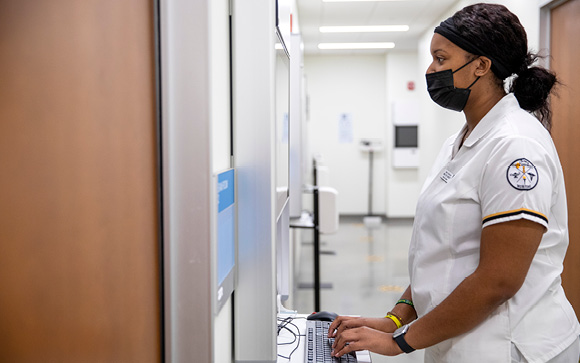Many in the Fayetteville State University community are seeking for the university to have its own historic civil rights trail marker to commemorate its contribution to the civil rights movement! Get the full story from Akira Kyles at The Fayetteville Observer below.

In the 1960s, as the civil rights movement spread throughout the country, Fayetteville State University made its own strides locally.
Now, there is a push to recognize the contributions of FSU during the civil rights movement. In a City Council meeting Oct. 11, Fayetteville resident Joann Adams made comments about the city applying for a historical civil rights trail marker for FSU.
Councilwoman Shakeyla Ingram said she has spoken with Adams and is now in the planning stages of putting together information for Fayetteville to put up a historical marker program.
“We are looking forward to working with her,” Ingram said. “It’s very needed in the community.”
Adams said she found out about the William G. Pomeroy Foundation, which helps preserve community history, and how the organization has helped get markers at historical sites.
Adams, who took part in protests as an FSU student in 1963, said she feels it’s important to recognize the efforts of FSU students that year.
“I was interested in markers and I found out the foundation was actually going to give 50 markers in North Carolina, and it has to do with places there were protests, there was marches and all events,” Adams said.
Adams was a freshman at FSU when she joined the protests.
“I remember when we formed our circle and sang ‘We Shall Overcome’ a man came out and threw a bottle of ammonia in the circle,” she said.
Adams said it was important to her to participate in the protests despite all the cruel treatment because of the segregation she saw around her.
“I grew up in an area where there was the water fountains that said ‘colored’ and there was others that said white, and the bathrooms the same,” she said. “I recognized that we were not considered first-class citizens.”
‘We deserved the same treatment’
After former FSU chancellor Willis McLeod learned of efforts to secure a marker, he said he was proud that the legacy of the movement was being honored.
In the spring of 1963, McLeod was a student at FSU. He helped organize marches and protests, and participated in sit-ins in shops and restaurants where Black patrons were denied, he said.
“I was arrested five times, I endured a lot of heckling, spat on, hit, called names, was treated very badly as an individual and as a group,” he said.
McLeod said protests and marches would range between 75 to 100 people.
Through all that the protesters endured, he said it was their determination that pushed them through.
“We felt strongly that we deserved the same treatment,” he said. “We were determined that we will get those rights. That determination and commitment to the cause is what kept us going.”
McLeod said after several weeks, the city organized a biracial committee, composed of diverse leaders from the city, and they all sat down and worked out an agreement about how they would integrate different businesses in downtown Fayetteville. Your stories live here.Fuel your hometown passion and plug into the stories that define it.
The students gained entry to restaurants and theaters and earned jobs they were previously turned away from, McLeod said.
“We were euphoric,” he said. “We had worked hard, we had suffered and lived through a lot of pain and hurt. We were very happy, very pleased that we were able to accomplish many of our objectives.”
In 1962, Jimmy Buxton was an E.E. Smith High School freshman. Buxton, now the NAACP Fayetteville chapter president, participated in demonstrations alongside FSU students.
“When the demonstrations started downtown integrating the Woolworth and Kress, and all those sit-in places like that, Fayetteville State and E.E. Smith students were both going in and doing this,” he said.
Buxton said Fayetteville was a lot easier to integrate compared to other cities.
“It didn’t last long; I think they gave in pretty much,” he said. “I think it really got bad one day over the summer and after some of them, I think they somewhat broke down.”
Even though he found that Fayetteville was easier to integrate than other places, there are still some instances he can’t forget, such as the tear gas and reading about a woman who threw a snake at protesters.
Buxton said he felt it was important to participate after witnessing racism and segregation since he was young.
It was experiences like watching a white man drinking water out of the “colored’ fountain to rinse tobacco out his mouth and spitting it back in the “colored” fountain before going to the “white” foundation for a drink of water.
Buxton also recalled a time when he was even younger and just learning to whistle.
“I guess I was probably four or five … I was just walking down the street and I started to whistle and my dad snatched me and said ‘boy, are you trying to get us killed?'” he said. “When he got me back home, he showed me a picture in the Jet [magazine] of a Black boy hanging from a tree in South Carolina for whistling at a white woman.”

Beyond the 1963 demonstrations
According to FSU adjunct history professor Francena Turner, although the 1963 protests are more widely known, students in the Fayetteville area were protesting before and after that.
“The fact that that was the bulk of the work to effectively desegregate the stores and shops and eating establishments, downtown movie theaters happened but we were active in 1960, as well,” she said.
The 1960 protests didn’t last as long as the 1963 protests, and they weren’t as strategically organized, according to Turner.
“There was a small cadre of students who had been present for both the 1960 sit-ins and the 63′ sit-ins,” she said. “So I kind of argue in my dissertation that there was some established leadership in, at least if nothing else we know, what didn’t work in 1960. So, they could more effectively plan in ’63.
Turner said she thinks a historical marker should be placed to honor the sacrifice of the FSU students in the 1960s.
“There was this constant marching back and forth from Fayetteville State to downtown, I think matters,” she said. “I think it should be, not just locally known but nationally known because movement is much more than what happens in one location, what happens in one city.”
According to McLeod, the protests led to the Black community getting more statewide representation.
“The movement wasn’t just confined to a national movement,” he said. “We were able to get more of the resources we needed, and we had more advocacy. We were able to elect minority representatives to the General Assembly and as a consequence of that, we had a presence in the General Assembly, in the state and people to advocate more funding and more services and programs for the university.”



